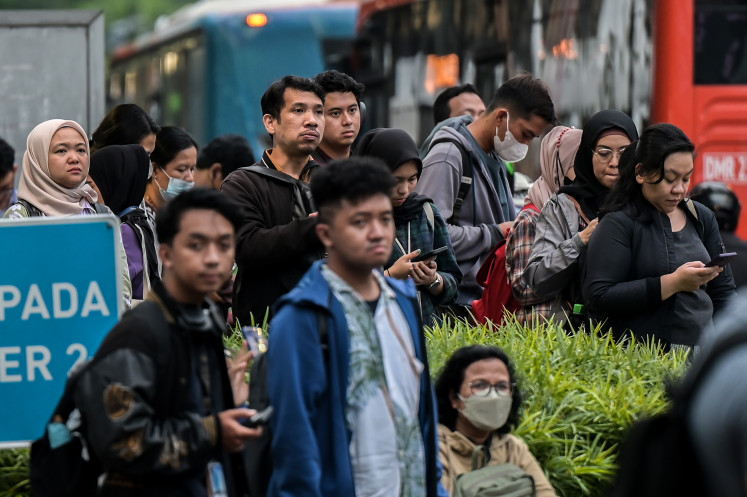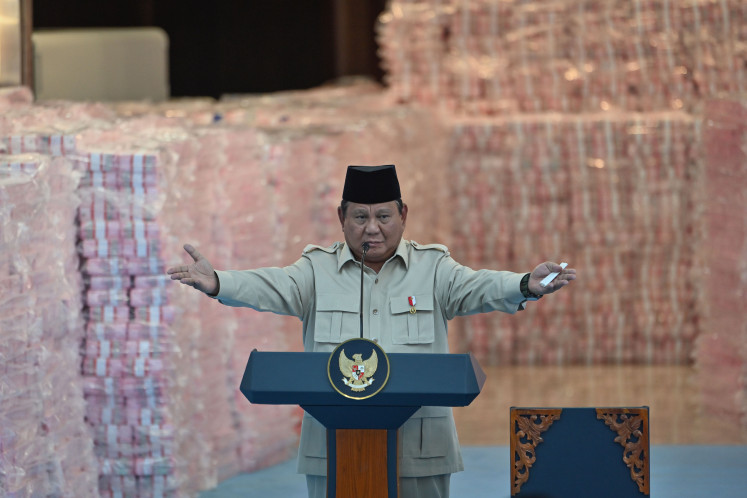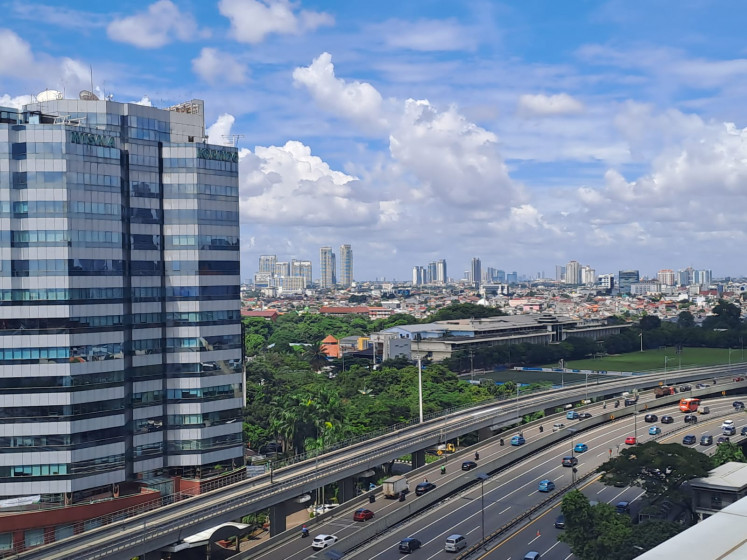Popular Reads
Top Results
Can't find what you're looking for?
View all search resultsPopular Reads
Top Results
Can't find what you're looking for?
View all search resultsTemples get ready for Chinese New Year
Spiritual cleanse: Statues and prayer instruments are cleaned at Griya Kongco Dwipayana temple in Tanah Kilap area, Denpasar, as temples across Bali prepare for Chinese New Year celebrations
Change text size
Gift Premium Articles
to Anyone
S
span class="caption" style="width: 398px;">Spiritual cleanse: Statues and prayer instruments are cleaned at Griya Kongco Dwipayana temple in Tanah Kilap area, Denpasar, as temples across Bali prepare for Chinese New Year celebrations. JP/Stanny Angga
Temples across Bali are gearing up to celebrate Chinese New Year this Sunday by holding rituals and decorating places of worship. At Griya Kongco Dwipayana temple in Tanah Kilap, South Denpasar, caretakers and volunteers worked together to clean up the temple, including sanctifying statues and prayer instruments.
The cleansing ritual typically takes place a week before Imlek (Chinese New Year) with the philosophy of “starting the New Year with a virtuous heart”.
“Removing the dust is like purifying our hearts from all negative thoughts, in the hope that we can have a better life in the year to come,” said Ida Bagus Adnyana, high priest at Griya Kongco Dwipayana.
Prior to the clean up, temples usually hold the ritual of “ushering the gods”, where they say prayers to let the gods go to heaven.
This year, the rituals were held on Sunday and Monday.
“We have held the ritual to let the gods leave the temples and go to their places,” Adnyana said.
“And now that this place is vacant, we can clean it without restraint.”
While some of the temple’s caretakers were busy wiping up the sacred statues and instruments,
others installed red lanterns and a range of adornments.
Besides employing 12 caretakers, the temple welcomed volunteers to help prepare for the celebration.
This voluntary work, called ngayah, is usually carried out by Hindus and Buddhists, as a reflection of togetherness.
“Every year, we always have volunteers coming here to help out the preparation. This year, we have around 20 people,” Adnyana said.
He added the temple had welcomed all people regardless of their backgrounds to join the voluntary work.
One of the volunteers, Wayan Sukerta, felt that coming to the temple to take part in the preparation of Imlek was his duty. This is his fifth year of volunteering.
“I take part in ngayah as a form of gratitude to God for giving me health and prosperity,” the 42-year-old Hindu said while cleaning a statue frame.
“I will also come here with my family on the celebration day to perform prayers.”
Preparations to welcome the Year of Tiger were also seen at the Dharmayana temple in Kuta on Tuesday, as the work to decorate the building with red ornaments were still underway.
“We have four caretakers here to do the preparation. We are also assisted by volunteers,” said temple head Luwih Berata.
The temple, which was built around the 1800s, usually sees thousands of celebrants coming and taking turns to perform prayers during Imlek.
“People usually come here at the evening before the Imlek day to welcome the return of gods, which were ushered to heaven a week before the celebration. They perform prayers using various offerings, wishing for better and more prosperous year,” said priest Thio Tjin Bun.
Celebrations of Chinese New Year in Bali have taken place for a long time, as Chinese cultures have acculturated with that of the Balinese, studies say.
Some of the Chinese cultures were adopted by Balinese people include the use of Chinese coins of kepeng in Balinese religious ceremonies. Some Balinese arts, such as in sculpture and architecture, were believed to have been influenced by Chinese arts.
Studies show that Chinese community was integrated into Balinese people since they both share the values of tolerance. They become members of local customary villages and have similar rights and responsibilities to local people.










